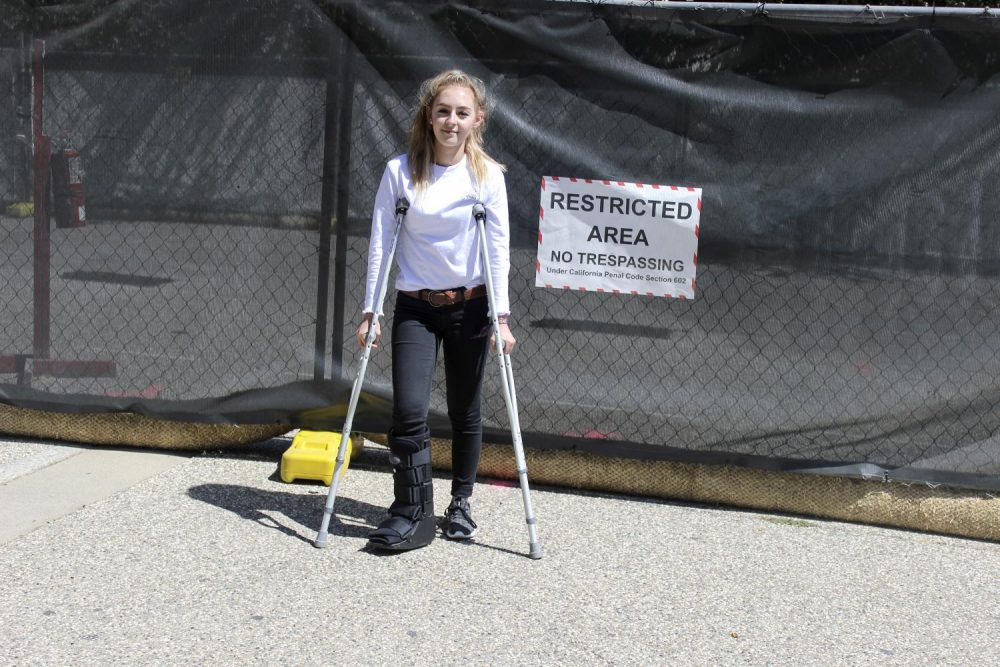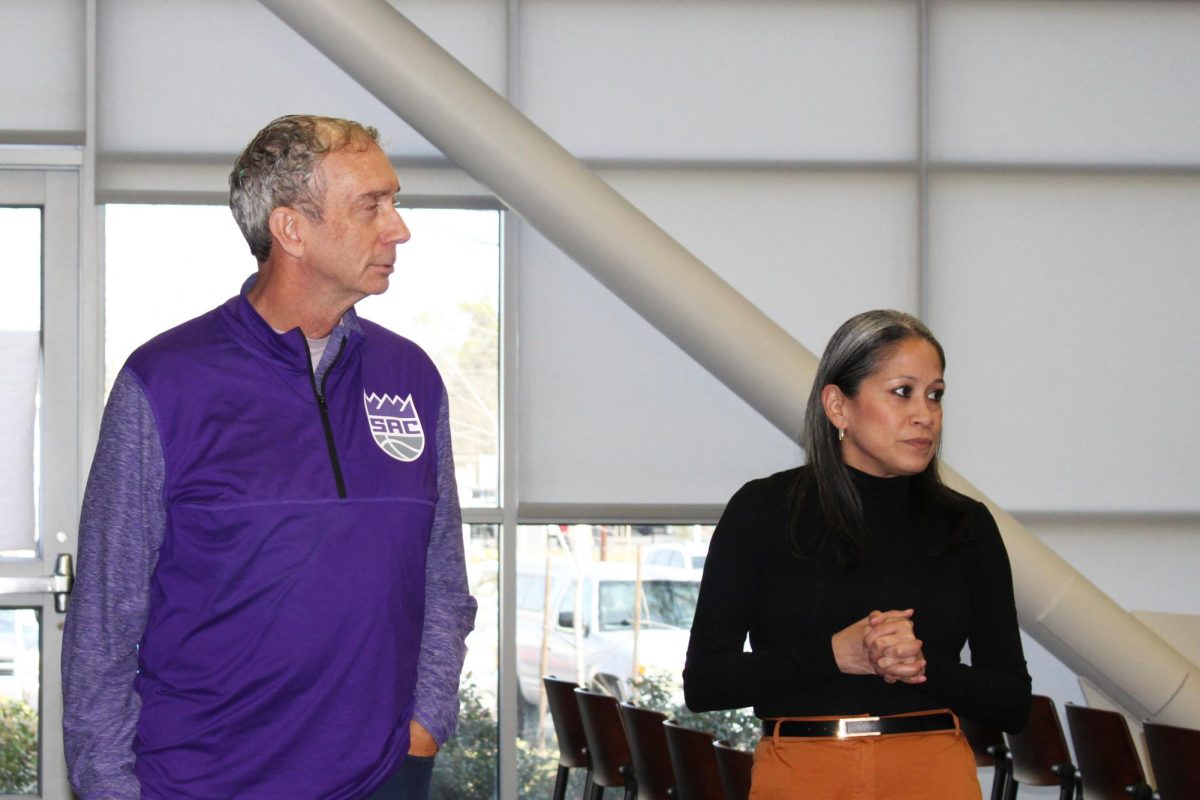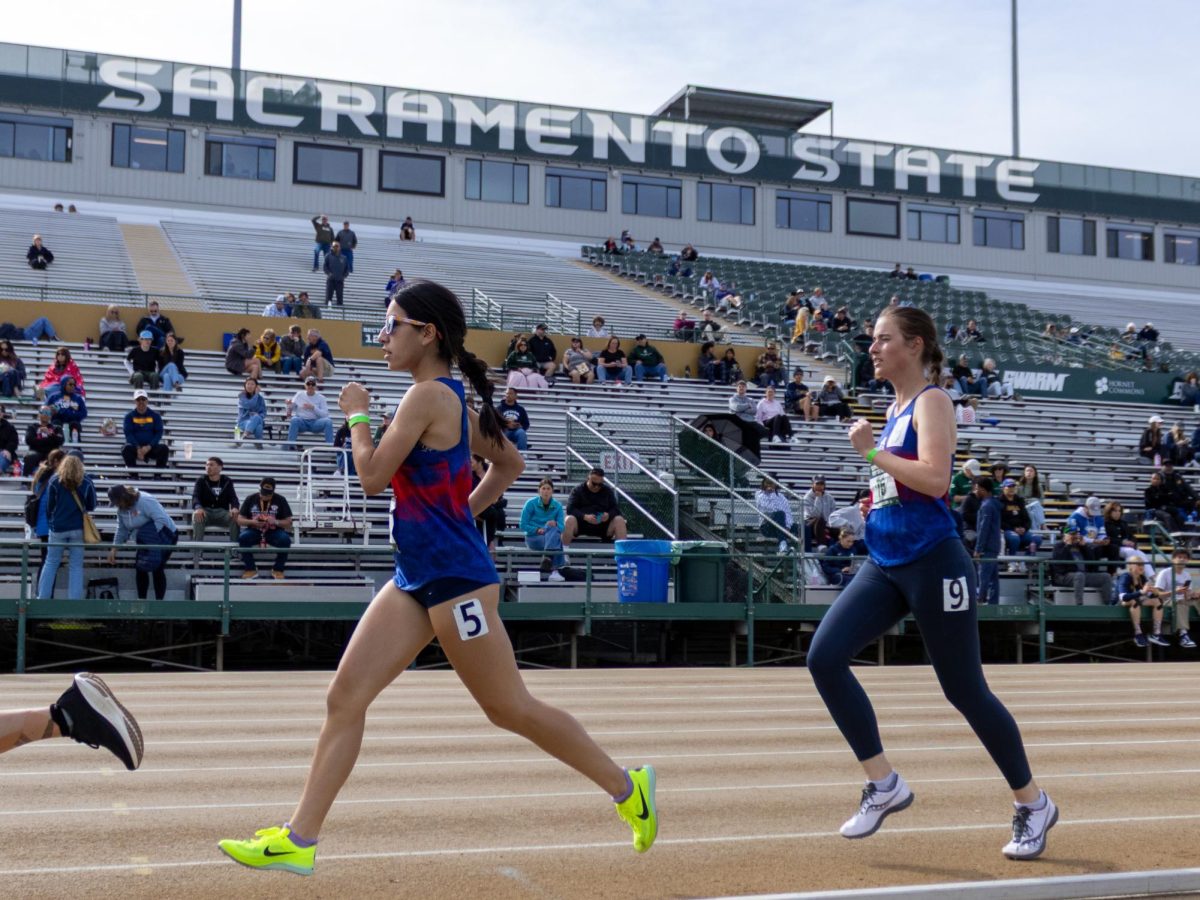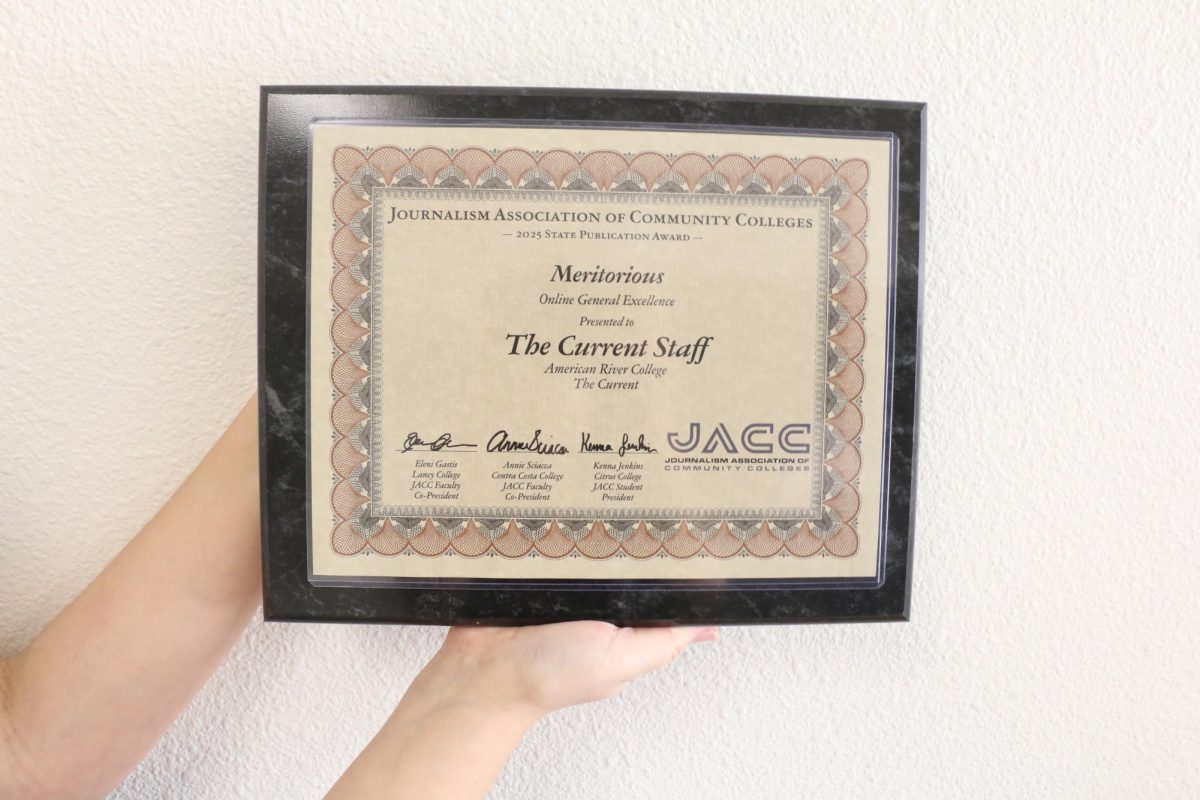Disabled students at American River College are encountering problems getting around campus because of the STEM construction project, according to students who have been affected by it this semester.
Construction work has entered the project’s second semester at ARC. Compared to last semester, there are increased constraints on the area around the working zone, according to Lucy Star, a student at ARC majoring in psychology and criminal justice. Likewise, there is only one pathway for students to use due to the fences, which means it takes more time for disabled students to get to class. This has caused some students to make the hard decision to leave school.
“I think [construction has] really impacted my overall satisfaction with the campus. I actually really don’t want to stay here because of it, it really increases the hardship of getting to class especially with disability,” Star said. “It increases the anxiety, and I feel really had negative impact on how I am doing.”
The fences surrounding the construction are in the middle of campus and have caused a disconnect between the pathways toward different buildings, and, in the process, have annoyed students trying to catch their classes on time.
According to some disabled students, the increased time it takes for some students to navigate between classes takes away from their ability to participate in class.
“The construction really has affected my class schedules and how I get to my class,” explained Noemi Medrano, a disabled student at ARC majoring in fashion design. “Before, I used to be able to take a shortcut to my class in the [Portable Village], but now, I either have to get dropped off there or walk all the way around the front of the school to get to the class, which would take about 20 minutes by walking.”
Students say they want more solutions such as creating pathways in between construction to benefit disabled students. Making the pathways in between the construction for disabled students may make it possible for them to reach their classes on time.
“I think they should put more wheelchair accessible routes for handicapped students,” said Medrano. “And they should be careful with the construction and make sure it doesn’t harm any students.”
According to Medrano, the main concern is the safety of students; especially when witnessing students with disabilities being even more so affected by the lack of alternate pathways to class, and the crowds they must weave through.
Even temporary pathways would help students, according to Elena DeNecochea, who serves as Vice President of the Student Senate. She says she has seen the struggle students are facing firsthand.
“I want to see the school pave new pathways, even temporary pathways, through areas of the construction site to assist students in their ability to get to class safe and on time,” DeNecochea wrote to the Current by email.
The fence changed the routes students use and made it limited. That led to be crowded always and many disabled students are forced to compromise while using the route.
For example, crowds have made it impossible for students who use wheelchairs to navigate the pathway between classes safely.
“Students are being pushed in wheelchairs down the roadway because the sidewalk is too crowded and that does not seem safe to me,” DeNecochea wrote. “I also witnessed blind students trying to make their way through the crowds on the sidewalk.”
Medrano’s suggestions about wheelchair accessibility and making sure students are safe during the construction are welcomed by Matthew Blevis, the operation supervisor for the Operations Department.
“The safety of the campus community is our highest priority and the fencing is there to help provide a safe environment for all,” Blevis said. “Fencing will remain around the construction zone the duration of the project; however, we will adjust the fence to make the campus as accessible as possible as the project moves to different stages of construction.”
The Operations Department created the fences not only to protect students that are near or in the building site, but it also provides a safeguard for the site itself.
According to the Operations Department, they are in contact with the DSPS office to provide a possible solution for the students.
“The college is working in close partnership with the [DSPS office] to support students,” Blevis said. “DSPS works individually with students to help address any potential impacts.”
Medrano also suggested that the construction should be done any time between semesters or during night, his way the students feel that they can depend on being able to get to their class on time.
“I think they should have done this in summer when there is less students because it’s convenient and I think … more people come during the fall and spring semesters,” said Medrano.
The suggestions about construction being scheduled during different hours was welcomed by the Operations Department; however, the campus is located in a residential area that could bring sensitive to their neighbours.
“We appreciate all suggestions made by students, staff and our community. This particular suggestion, while thoughtful, has many impacts and constraints that would make the project unfeasible,” Blevis said. “Due to noise restrictions (ARC is located in a residential area) and labor agreements.”
According to Blevis, the schedule set for the construction process couldn’t be changed, due to the potential disturbance to people living in the area around ARC that may be more sensitive to the disturbance, especially at night.
Scott Crow, ARC’s Public Information Officer, commenting on behalf of DSPS said he appreciates the patience to the students who were impacted by the construction.
“We appreciate everyone’s patience and understanding during this time of construction. We are working hard to minimize the impacts of construction and be responsive to individual needs,” Crow said.














Gerald Nuckols • Sep 28, 2018 at 11:24 am
It is disappointing to see so many grammatical and punctuation errors. Did this article not get to a proofreader?